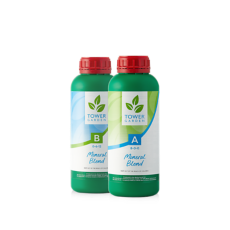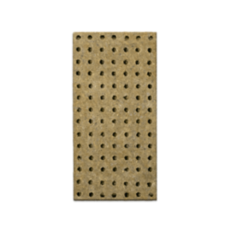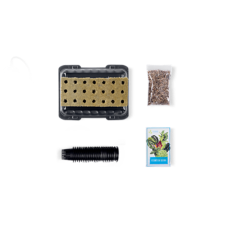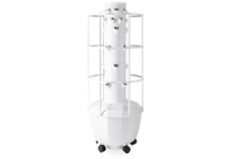Defend Your Plants from Destructive Diseases
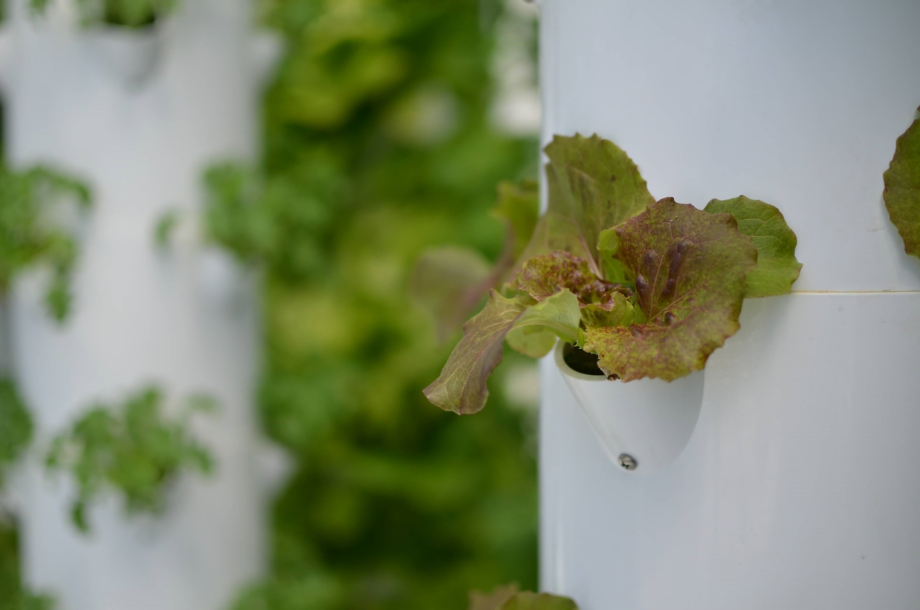
You know your plants need sufficient sunlight, consistent nutrients, and proper attention to grow healthy and strong. But don’t forget that monitoring your plants for diseases — or, better yet, preventing disease in the first place — is also vital to a successful harvest.
Thankfully, the risk of plant disease is relatively low with Tower Garden for two primary reasons:
- Healthy plants have a natural ability to resist diseases. And Tower Garden uses a unique Mineral Blend to provide plants with the nutrients they need to be healthy.
- Tower Garden plants don’t grow in dirt, often a breeding ground for many pathogens.
But infection is still possible, which is why it’s smart to take the following preventive measures.
6 Steps to Prevent Plant Diseases
Follow these steps to minimise the risk of plant diseases in your Tower Garden:
- Grow disease-resistant/tolerant plants. Reference plant descriptions on seed packets, in catalogues, or online to determine resistance.
- Match your plants to your growing conditions. Stressed plants are more prone to infection. For example, sun-loving courgette will be more susceptible to mildew in the shade, and basil may develop leaf spot in cool, damp weather.
- Avoid a wet environment and prune often to improve air circulation. Most plant diseases thrive in moist environments with poor air circulation.
- Control garden pests. Aphids, cucumber beetles, leafhoppers, and other bad bugs are often responsible for transmitting diseases.
- Keep a clean growing environment. Remove dead plant debris, and use sanitised tools.
- Destroy diseased plant material. Do this as soon as you see signs of infection to keep diseases from spreading. If a plant has become too diseased despite control efforts, replace it with a new plant.
3 Types of Plant Diseases
Many plant diseases exist, but those that Tower Gardeners may encounter fall into three general categories: bacterial, fungal, and viral. Here’s a quick look at each type.
Bacterial Diseases
Bacteria may be microscopic, but the diseases they cause are fast-spreading and difficult to control. Symptoms of infection typically include dark streaks on plant foliage. Prevent bacterial diseases from spreading by removing and destroying infected plants upon detection.
Here are some common bacterial plant diseases.
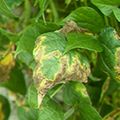 |
Bacterial Blight Bacterial blight infections occur in warm weather on plants previously injured through insect feeding or other damage. Symptoms appear as water-soaked lesions on the underside of the leaves, which dry and become brown and brittle. A yellow border usually develops around the dead tissue. |
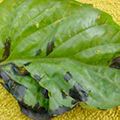 |
Bacterial Leaf Spot Best identified by black spots or lesions on the leaves of basil, peppers, tomatoes and other plants, bacterial leaf spots thrive in wet, humid conditions and spread through splashing water like rainfall. |
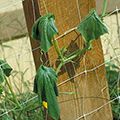 |
Bacterial Wilt A serious disease of young cucumber plants, bacterial wilt is transmitted by one of the crop’s major pests: The cucumber beetle. Symptoms include wilting leaves and eventual plant death. |
Fungal Diseases
Parasitic fungi represent the most common type of plant disease that indoor gardeners encounter. These fungi often present as discolouration, dots, or fuzzy mold-like growth on plants. Prevention is the easiest, most effective solution. Prune your plants frequently to discourage the stuffy, moist conditions under which fungi rapidly grow and spread.
If you discover a fungal disease, immediately remove any leaves or plants that show symptoms of infection, and consider treating the remaining plants with natural sprays (e.g., neem oil, potassium bicarbonate, liquid copper).
Here are a few fungal diseases to periodically check for.
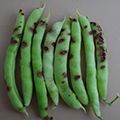 |
Anthracnose A major disease of beans, cucumbers, melons, and tomatoes, anthracnose results in stunted plant growth, reduced yields, and plant death. Symptoms include dark spots on stems, leaves, and fruit. |
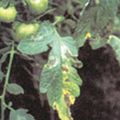 |
Blight Blight attacks the leaves, stems, and fruit of aubergine, peppers, and tomatoes. Early blight appears as dark brown, leathery lesions with faint, concentric rings like a target. Late blight lesions have a brown, dead center, surrounded by tissue that appears water-soaked, grey-green, or yellowed. Symptoms typically show first on lower, older plant leaves. |
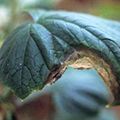 |
Botrytis A grey-brown fuzzy mold, botrytis usually first appears on dead or dying plant debris, often in cooler environments. |
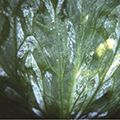 |
Downy Mildew Attacking a variety of plants, downy mildew looks like fine white cotton or frosting that darkens over time. It tends to infect lower plant leaves first, spreading rapidly and killing plants during cool conditions. |
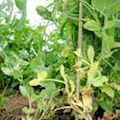 |
Fusarium Wilted leaves, stunted growth, and vertical brown stripes on plant stems are fusarium’s signature. This fungal wilt often appears late in the growing season, affecting older leaves first, then progressing to younger leaves and resulting in plant death. In some cases, only part of an infected plant shows symptoms. |
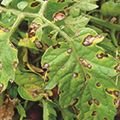 |
Leaf Spot There are a few common types of leaf spot fungi, but symptoms are generally the same. First, small halo-like spots appear on plant leaves (usually starting with the lower, older leaves). Then, as the disease progresses, spots enlarge, ultimately resulting in small holes before leaves turn brown and die. Leaf spot can attack at any stage of plant development. |
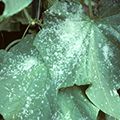 |
Powdery Mildew One of the most widespread and recognisable fungal diseases, powdery mildew forms a white-grey powdery growth, usually on the upper surfaces of leaves. Warm days and cool nights create an ideal climate for powdery mildew. |
Viral Diseases
Like bacteria, plant viruses are too small to see with the naked eye. But they often reveal themselves with stunted and deformed plant growth. Insect pests, such as aphids and leafhoppers, commonly spread viruses. So the best way to prevent them is to prevent pests.
Viruses may differ by growing region, so check with your local Cooperative Extension Service to find out what viruses are common in your area — and what plants are resistant.


